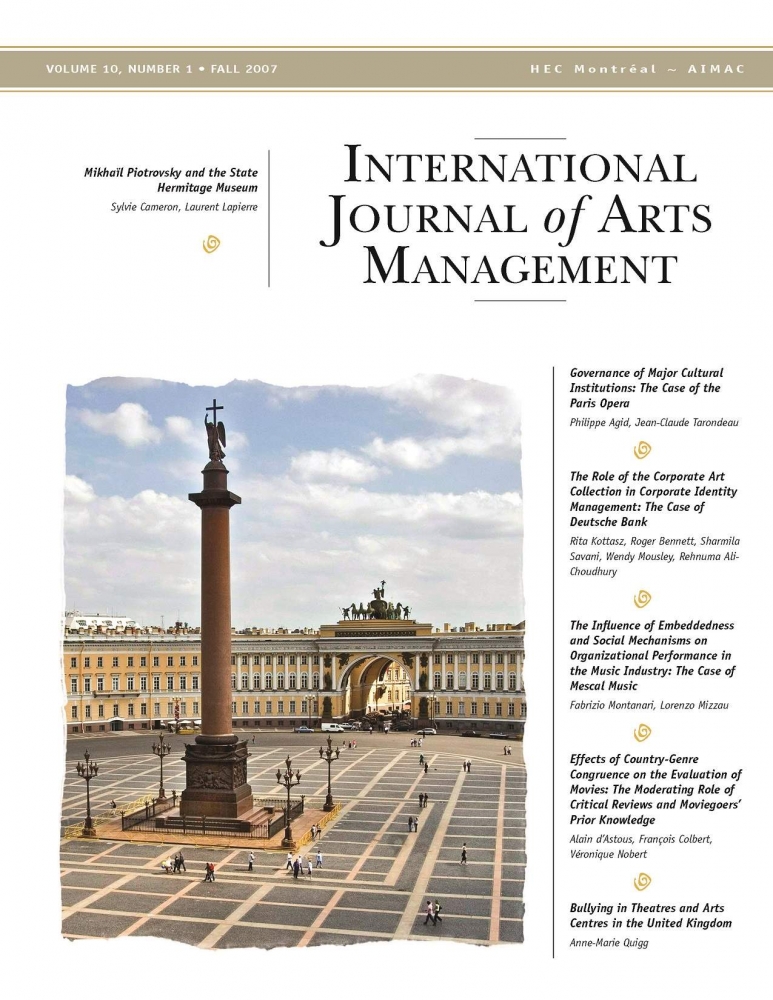IJAM Volume 10 Number 1 (PRINT)
Product: Journal
$84.00 CA
EDITOR’S NOTE
This issue of the Journal illustrates, once again, the rich diversity of themes covered by our discipline, as well as the variety of sectors and geographic origins represented by researchers in the field. At the same time, strategic analyses and case studies can be seen as playing a dominant role in terms of the approaches used.
Three articles in this issue, while dealing with very different themes, are aligned with these methods. The first article, co-authored by a manager and an academic, examines the governance of the Paris Opera from a historical perspective. The second, written by a team of British researchers, analyses the role of art in the establishment of corporate identity, based on a case study of the Deutsche Bank and its art collection. The third article explores the influence of networks on organizational performance; focusing on the cultural industries, in particular the music industry, it analyses the case of an Italian label.
Two other articles, one dealing with marketing and the other with human resources, are based on analyses of the findings of studies. The first deals with fast-moving consumer goods, a topic that, while frequently developed in marketing, has been little examined in the cultural field. The authors analyse the effect of country of origin alongside the influence of critics and consumer competence on the development of tastes. The second article addresses the issue of moral harassment and its specificity in arts organizations, based on a study of theatres and arts centres in Great Britain.
Finally, our Company Profile traces the evolution of the State Hermitage Museum in St.Petersburg, describing the many challenges it has confronted over the years.
I would like to take this opportunity to say a few words about the 9th International Conference on Arts and Cultural Management, which was held at the University of Valencia in July. This conference also underscored the enormous vitality of research in arts and cultural management. Speakers from 30 countries delivered 150 papers. The increase in volume compared to earlier editions of the conference was accompanied by an increase in the quality and diversity of papers, attesting once again to the dynamism of our field of research. This vitality was also evident in the large proportion of proposals submitted by young researchers, a number of whom were still PhD candidates.
François Colbert
Éditor
